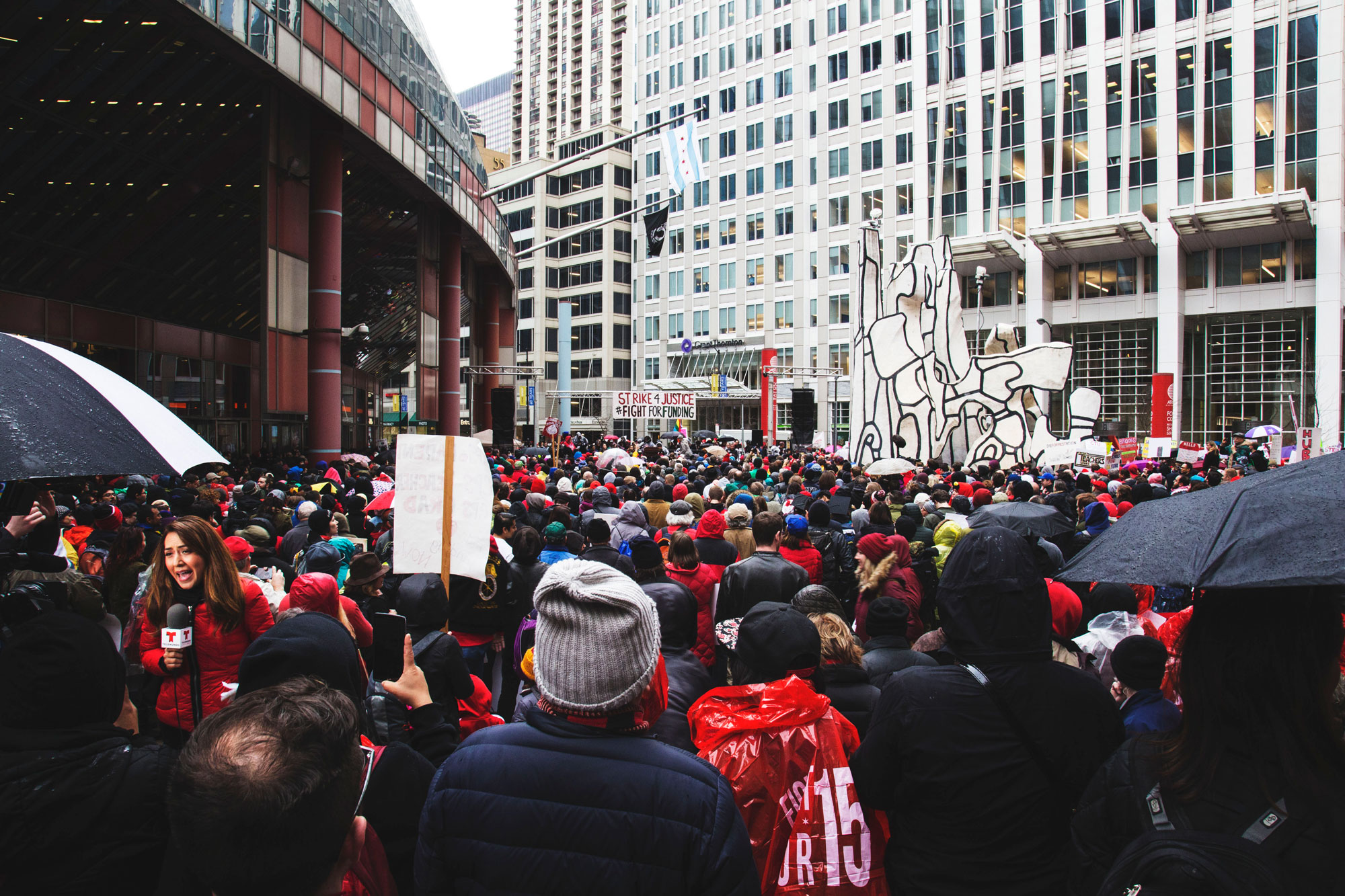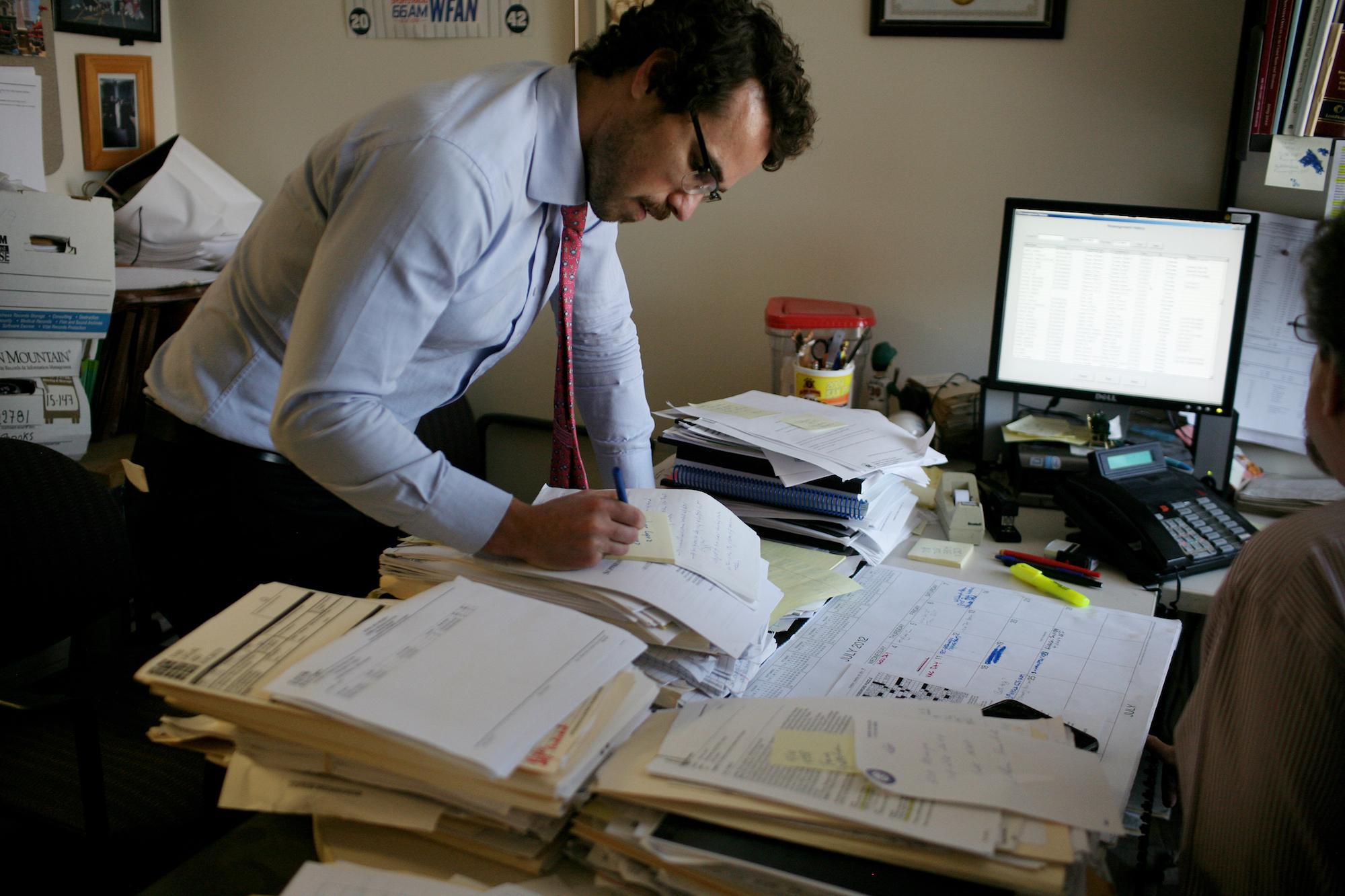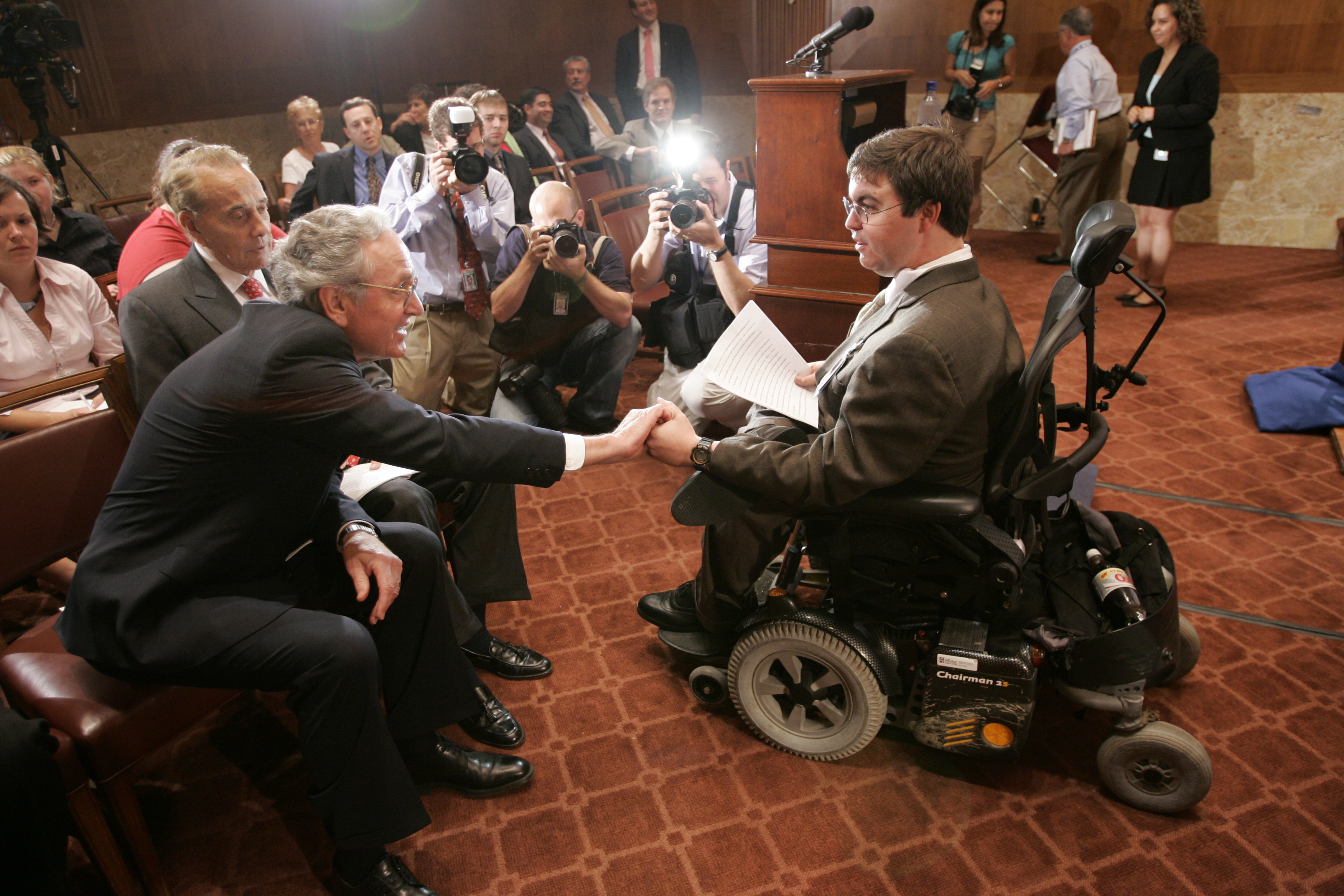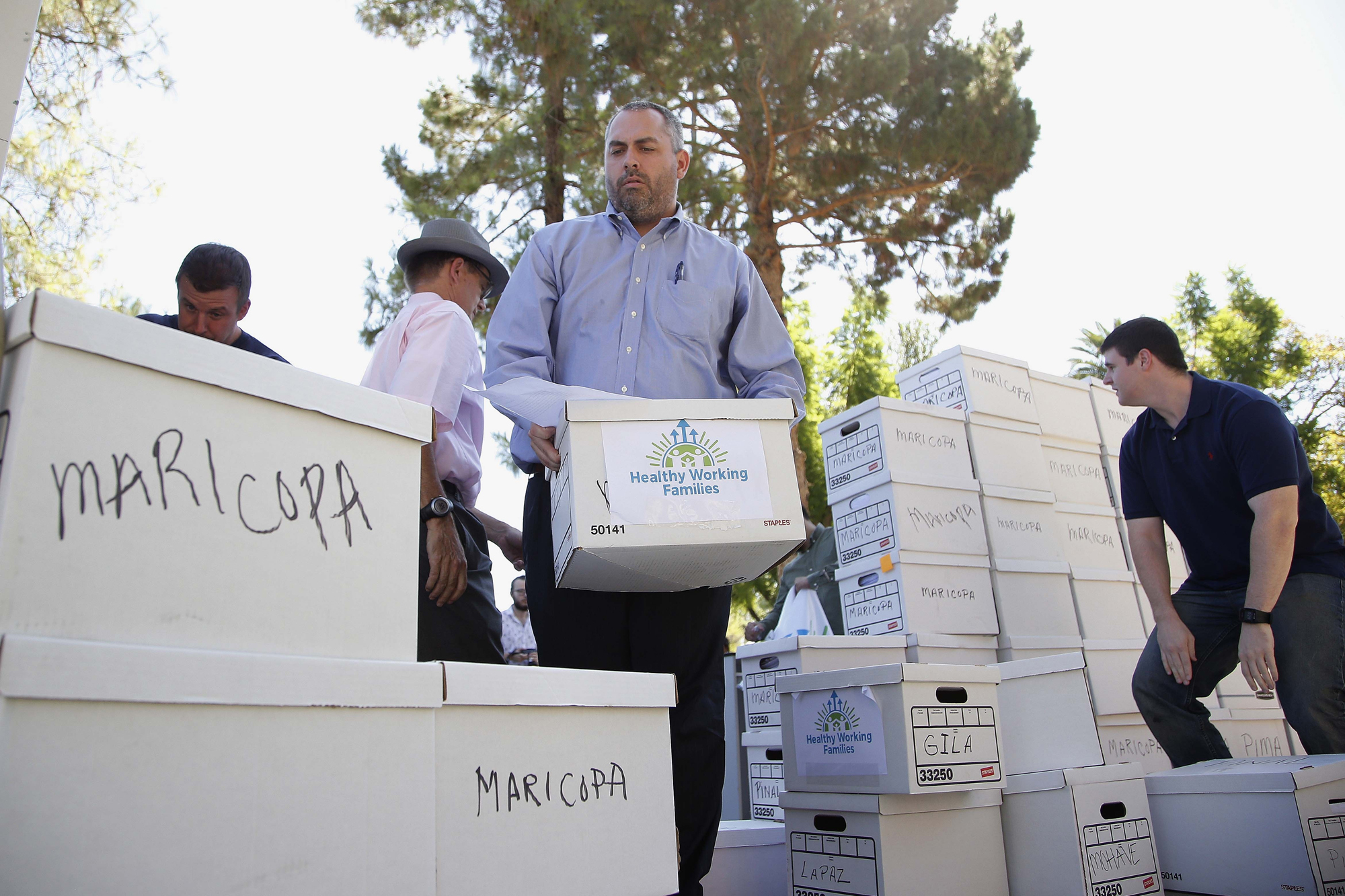Fed up with the harsh conditions under which they were forced to labor, workers from West Virginia decided to call it quits. Together, they left their jobs, donned red bandanas, and amassed 10,000 strong near Blair Mountain, where a local sheriff had assembled a 3,000-man force of police, hired security, and militia to put them down.
No, this isn’t the recent West Virginia teachers strike — it’s a 1921 coal miners strike, which escalated into what would come to be known as the Battle of Blair Mountain. The two sides battled for five days, until more than 2,000 additional U.S. Army troops entered the fray to crush the workers rebellion. Up to 100 laborers were killed, hundreds more were injured, and more than 1,000 were arrested. While the uprising seems like an episode relegated to the largely forgotten labor wars of past, the Supreme Court’s upcoming decision on Janus v. American Federation of State, County, and Municipal Employees (AFSCME) may make such conflicts part of the future for unions once again.
Get TalkPoverty In Your Inbox
The plaintiffs in Janus—backed by right-wing foundations and corporate lobbying groups—seek to deprive AFSCME of its ability to collect agency fees, which are essentially reduced union dues from non-union members. By setting a federal precedent, the case could cleave the public sector workforce across the country into two groups: those paying for collective bargaining and those not paying for it but still receiving benefits such as higher wages—often referred to as “free riders.” The fear is that, without a way to prevent free riding, collective bargaining will be overburdened and underfunded, and already embattled unions—which have fallen from representing 33 percent of workers in 1954 to just 11 percent today—will be finished. Or, as Charles Wowkanech, president of the New Jersey State AFL-CIO, put it, “[S]uch a broad-based attack on workers would leave no group unscathed.”
But this prognosis ignores that unions both existed and made great strides before they were officially recognized or even legal organizations. And it ignores what organized labor has accomplished in the roughly half of U.S. states that already prohibit mandatory agency fees—including West Virginia, Oklahoma, Arizona, and Kentucky, where massive teacher demonstrations have led to statewide victories.
* * *
Prior to the 1935 National Labor Relations Act (NLRA), employers had no obligation to recognize unions, and they even included anti-union clauses in employment contracts. This prevented millions of workers from joining unions in the late 19th and early 20th centuries.
Yet it was during this time that unions were their most militant. Without legal recourse, workers relied on direct action—such as boycotts, pickets, and strikes—to win their demands. These tactics put workers face to face with their opposition: the bosses and their lackeys; mercenaries; local law enforcement; and, as in the 1921 West Virginia coal miners’ strike, even the U.S. military. And with so many union sympathizers barred from official memberships, labor actions often included both unionized and non-unionized workers, if not their entire communities.
The results could be explosive. Besides the Battle of Blair Mountain, which remains the largest labor rebellion in U.S. history, the Haymarket affair of 1886 involved a bombing and Chicago police opening fire on a rally in support of striking workers; the so-called “Colorado Labor Wars” led to the deaths of both strikers and strikebreakers from 1903 to 1904; and two people were killed by the police and militia during the 1912 “Bread and Roses” strike in Lawrence, Massachusetts.
Despite the overwhelming violence used against them in this period, unions were still able to win significant victories, such as the eight-hour workday (albeit only in particular locations and industries). By 1934—the year before the National Labor Relations Act granted unions state recognition—the tide seemed to be turning in favor of workers: Sailors and longshoremen unionized all West Coast ports in the United States, and 400,000 textile workers from New England to the South launched what was then the largest strike in U.S. history.
According to Peter Cole, professor of history at Western Illinois University, these strikes—and the “working class radicalism” they represented—were curtailed by the NLRA. Cole says the Act was designed to contain “radical left-wing forces by forcing employers to accept modest, if still quite beneficial, reforms,” like giving workers the right to unionize and strike.
In other words, the federal government used the NLRA to enforce a peaceful compromise between labor and business, rather than risk the escalation of all-out class war. In exchange for the right to unionize, strike, and collectively bargain, workers agreed to union elections and arbitration of unfair labor practice charges through the newly created National Labor Relations Board (NLRB). That is, rather than rank-and-file union members fighting for their demands through direct action, labor struggles were decided by lawyers and bureaucrats behind the closed doors of NLRB regional offices. (Although the NLRA does not cover public sector employees, many of these same rights were later extended to them through various state and federal measures, such as President John F. Kennedy’s Executive Order 10988, with the substitution of federal and state boards for the NLRB.)
Janus threatens to dismantle this regime of compromise and deliver unions into the pre-NLRA era, shifting labor struggles from the courts back onto the streets. And we don’t have to look as far back as the 1920s for examples of how this could play out. Unions in West Virginia lost the ability to collect agency fees in 2017, yet rather than collapsing, labor’s struggle in the state has hit a new zenith. Without the backing of their union or much faith in their elected representatives, 20,000 rank-and-file West Virginia teachers organized and led their recent nine-day strike, winning raises for public sector workers statewide and inspiring successful teachers strikes in Oklahoma, Arizona, and Kentucky—all states where unions are barred from collecting agency fees. In an homage to the past—and perhaps a harbinger of the future—some of the teachers in West Virginia chose to wear red bandanas, just like the striking coal miners of 1921.
Editor’s note: The views expressed in this article are the author’s alone and are not representative of the Center for American Progress’ policy positions on any issue.













